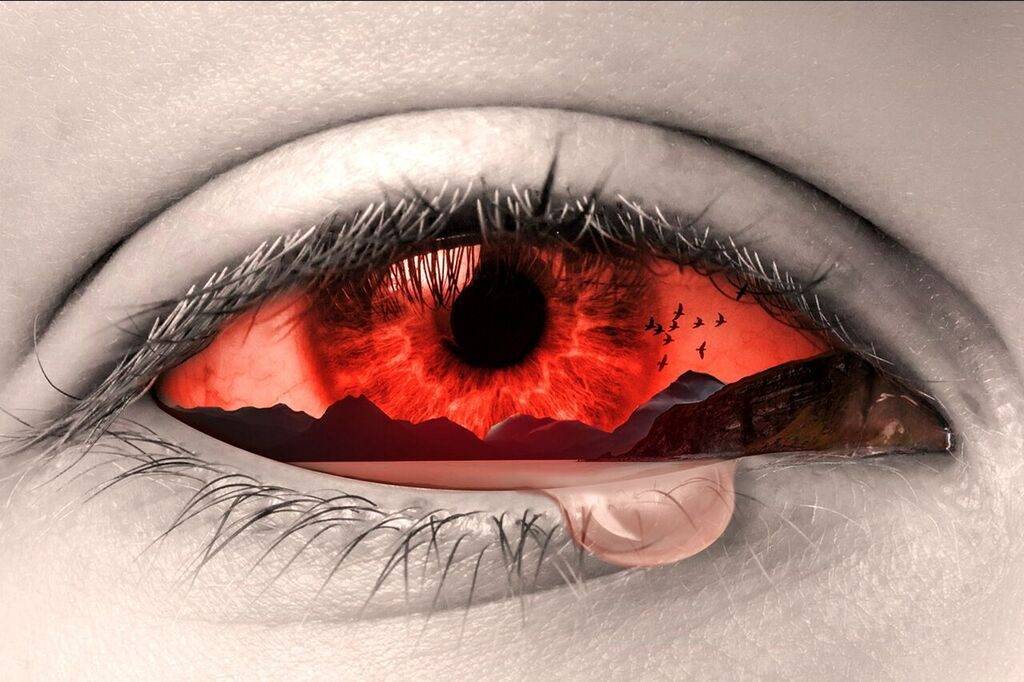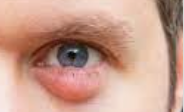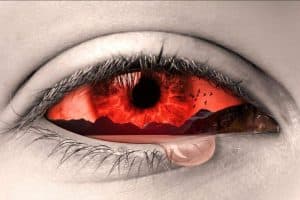Eye infections can cause redness, pain and inflammation, and can even lead to permanent vision loss if not treated effectively.
- Approximately 1 in 300 people suffer from an eye infection each year.
- In the US, in 2010, 930,000 people visited a doctor and 58,000 people visited an emergency department for microbial keratitis.
Here is a guide to the most common eye infections, their symptoms, and treatment methods.
Conjunctivitis (pink eye)
Infectious conjunctivitis, most commonly known as pink eye, is one of the most common eye infections.
When blood vessels in the conjunctiva, the thin membrane that covers your eyeball, becomes infected by a virus or bacteria, your eyes become pink or red and inflamed. Pink eye can also occur from allergies or chemical irritants such as chlorine.
Bacterial conjunctivitis occurs in 135 out of 10,000 cases in the US annually—approximately 1 percent of all primary care visits.
Symptoms include:
- Pink or red eyes
- Itchy eyes
- Watery discharge
- Increased tear production
- Thick yellow discharge
- Crusting in eye corner
- Foreign body sensation
Different types of conjunctivitis and how to treat them
Treatment methods will depend on the type of conjunctivitis.
With all eye infections, it is important to remember to wash hands frequently, and avoid contact with others until the infection has cleared.
- Bacterial: Antibiotic eye drops, ointments, or oral medications will be prescribed to eliminate the bacteria. Symptoms should subside within a couple of days after treatment.
- Viral: There is no medication for viral pink eye, but symptoms usually subside within a week to 10 days. To relieve discomfort, apply a warm, wet cloth to your eyes.
- Allergic: Over-the-counter (OTC) antihistamines eye drops or oral medications can help relieve allergy symptoms. Anti-inflammatory eye drops can also alleviate symptoms.
If you notice symptoms of pink eye, seek medical care as soon as possible.
Conjunctivitis caused by a virus or bacteria is highly contagious for up to two weeks after the infection starts— even with treatment.
Keratitis
Infectious keratitis occurs from an infection in the cornea, or the clear layer that covers your pupil and iris. Keratitis means swelling of the cornea, and isn’t always infectious if it develops as a result of an eye infection. However, it can result from a viral, bacterial, fungal, or parasitic infection.
Approximately 25,000 Americans suffer from bacterial keratitis annually.
Symptoms include:
- Redness
- Swelling
- Eye pain
- Abnormal discharge
- Increased tear production
- Pain when opening/closing eyelids
- Blurry vision
- Reduced vision
- Light sensitivity
- Foreign body sensation
Risk factors
- Wearing contact lenses
- Having a weak immune system
- Living in a warm or humid climate
- Using corticosteroid eye drops
- Suffering from an eye injury
Treatments
Treatment methods will depend on the type of Keratitis.
- Bacterial: Antibacterial eye drops are used for mild to moderate infections. Oral antibiotics are used to treat more severe infections. Symptoms usually subside within a few days of starting treatment.
- Fungal: Antifungal eye drops or medications are used to eliminate the fungal organisms. This type of infection can take longer to treat, sometimes weeks or months.
- Viral: There is no treatment for a viral infection— it usually has to run its course. In some cases, antiviral eye drops or oral medications will be prescribed to help stop the infection. These treatments can take anywhere between a few days to a week to alleviate symptoms. However, even with treatment, symptoms may reoccur.
If you are experiencing symptoms of keratitis, contact an eye doctor near you.
SEE RELATED: Internal Eye Infections
Blepharitis
Blepharitis is one of the most common ocular conditions caused by an inflammation of the eyelids, usually as a result of a blockage in the oil glands at the base of the eyelashes. In some cases, blepharitis is caused by a bacterial infection.
Mild blepharitis affects up to 45 percent of people.
Symptoms include:
- Redness
- Itchy eyes
- Burning
- Swelling
- Oily eyelids
- Light sensitivity
- Increased tears
- Foreign body sensation
- Discharge
- Crusting on eyelashes or eye corner
Risk factors
- Experiencing scalp or eyebrow dandruff
- Being allergic to eye or face makeup
- Suffering from problems with oil glands
- Having lice or mites on eyelashes
- Taking medications that affect immune system
Treatments
An antibiotic eye drop, ointment, or oral medication will be prescribed to clear up the infection. In addition, a corticosteroid eye drop or ointment will typically be prescribed to reduce inflammation.
Your eye doctor will also likely recommend that you use lubricating eye drops to keep your eyes moist and prevent irritation from dryness. Cleaning your eyelids with water, and applying a warm, wet compress will also help to reduce swelling.
Stye
A stye, also called a hordeolum, is a contagious bacterial infection that causes a tender, red bump on the perimeter of the eyelid. Styes can develop as a result of a clogged oil gland in the eyelash.
There are two different types:
External stye– at the base of the eyelid
Internal stye– within one of the oil glands in the eyelid
A stye is most commonly caused by staphylococcal bacteria, that is transferred from the nose to the eye on contact.
Symptoms include:
- Redness
- Eye pain
- Swelling
- Burning
- Tenderness
- Droopy eyelids
- Discharge
- Crusting around eyelid
Treatments
Most styes will require antibiotic eye drops— and remember, they are highly contagious!
Following the recommendations below can speed up the healing process and relieve symptoms.
- Apply a warm compress to your eyelids for 20 minutes, 4 times a day.
- Use a mild, scent-free soap and water to clean your eyelids daily.
- Take an over-the-counter (OTC) pain reliever, such as acetaminophen (Tylenol), to help reduce pain and swelling.
- Discontinue wearing contact lenses or eye makeup until the infection has healed.
In some cases, your doctor will prescribe an antibiotic ointment to help eliminate the bacteria.
The stye should disappear within about 10 days. If it doesn’t, ask your doctor about other possible treatments.
Caution: Do not attempt to remove a stye by popping it— this could result in further infections.
How can you prevent an eye infection?
Follow these guidelines to decrease your risk of developing an eye infection, and to keep viral infections from recurring:
- Avoid contact with anyone who has conjunctivitis.
- Don’t touch your eyes or face with dirty hands.
- Wash your hands frequently and bathe regularly.
- Use clean tissues and towels on your eyes.
- Wash your bedding every week.
- Avoid sharing eye and face makeup.
- Ensure that your contact lenses fit properly.
- Disinfect contact lenses every day.
- Follow an anti-inflammatory diet.
When to contact your eye doctor
Contact an eye doctor if you are experiencing symptoms of an eye infection. Many eye infections can be treated quickly with medical care, but it is always best to obtain a proper diagnosis as early as possible.
LEARN MORE: Guide to Eye Conditions
The earlier an infection is treated, the sooner you will begin to feel better.
Seek emergency medical attention if symptoms are severe— any eye pain or loss of vision requires immediate care.










